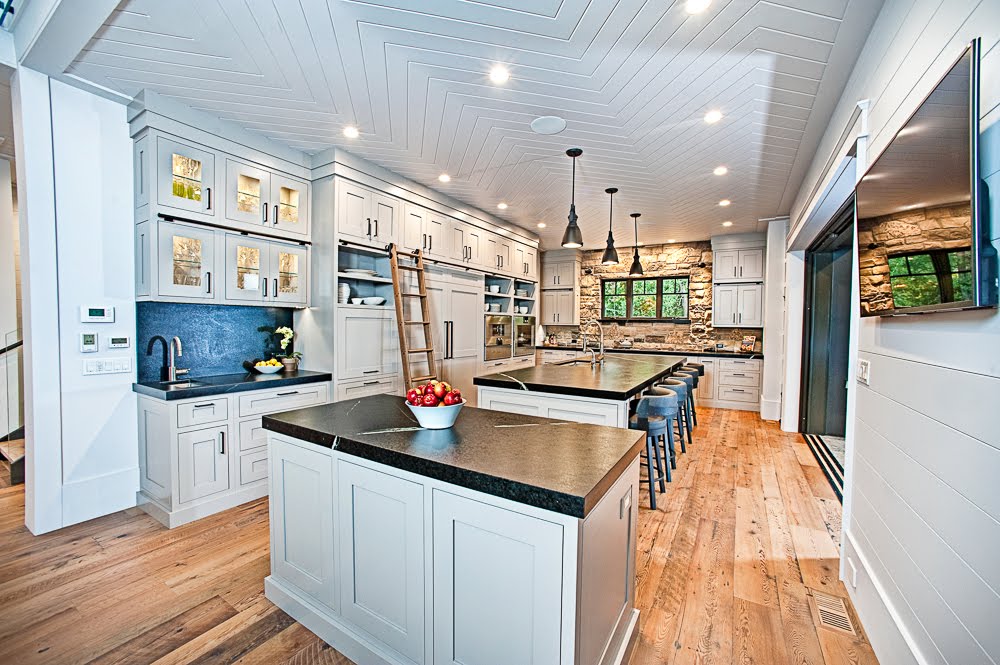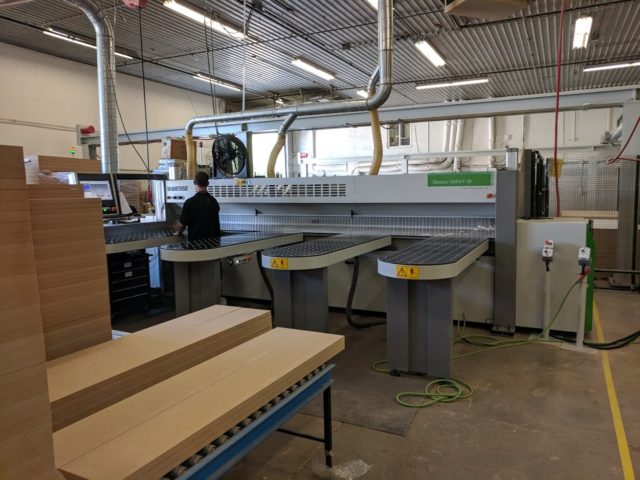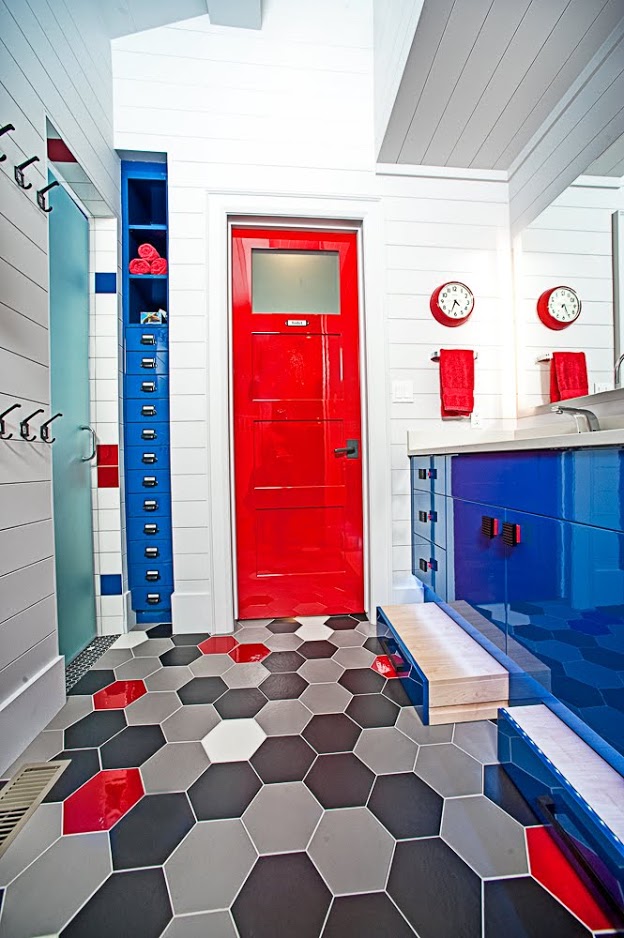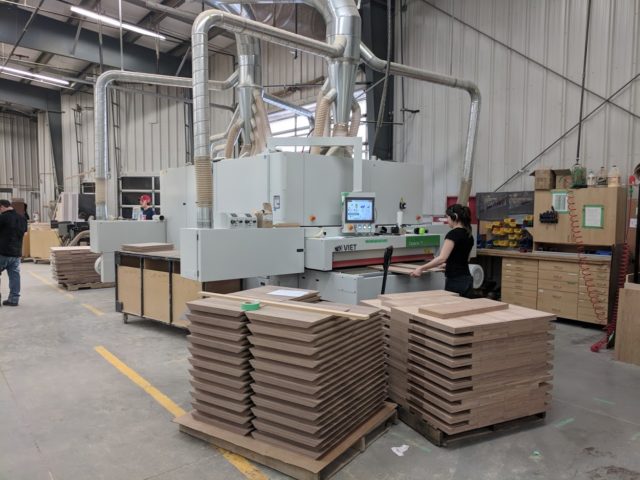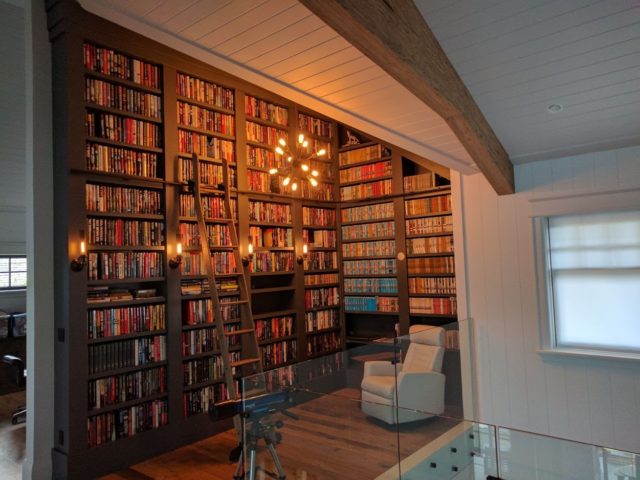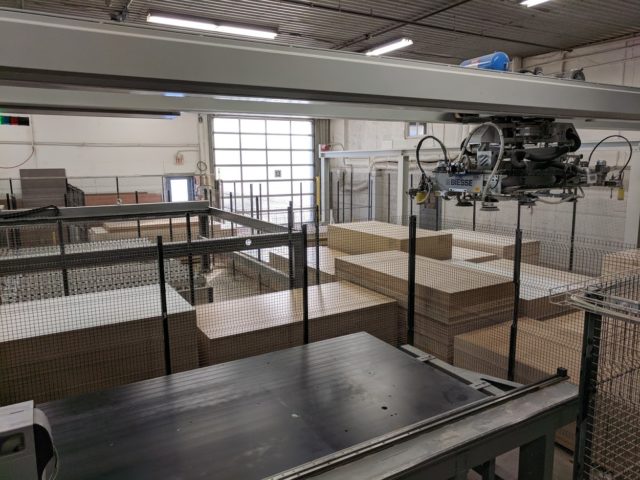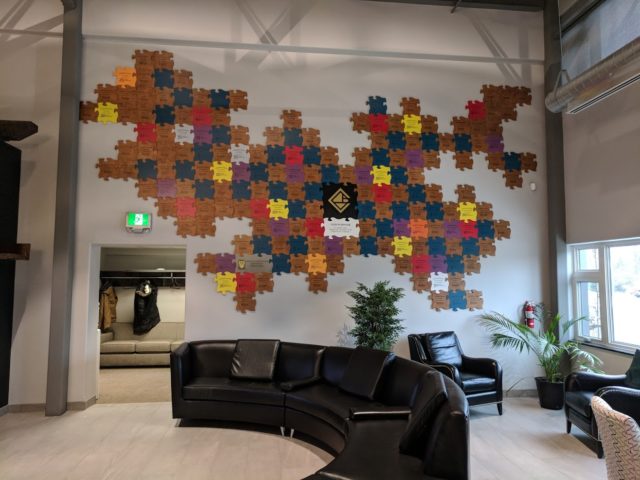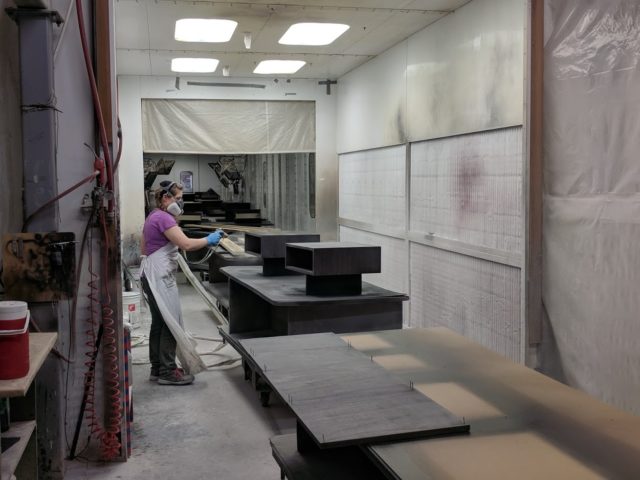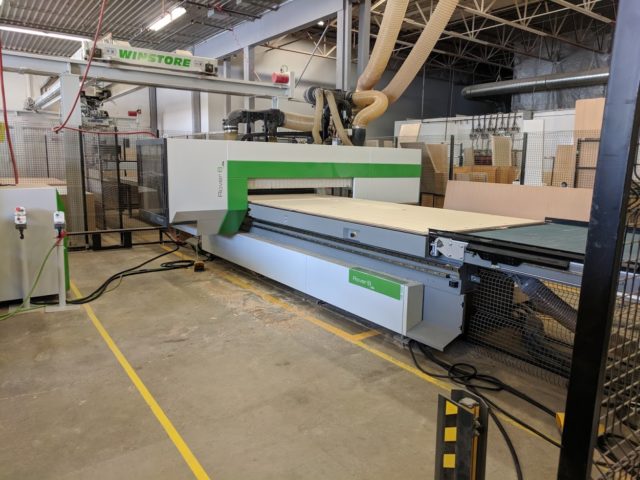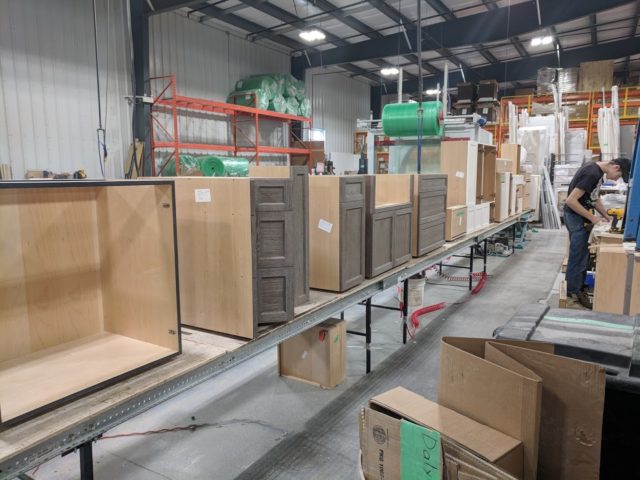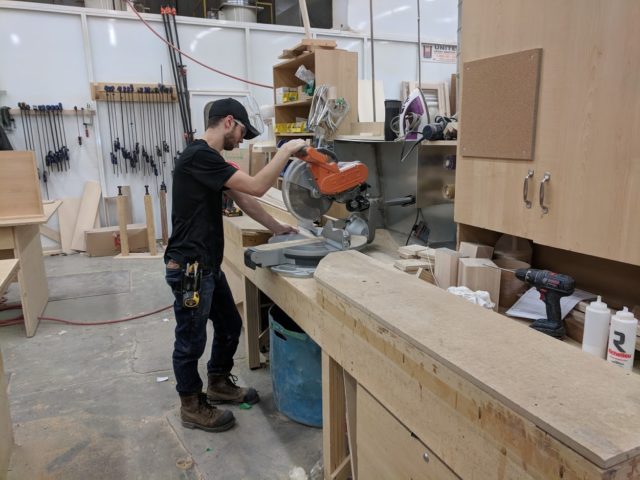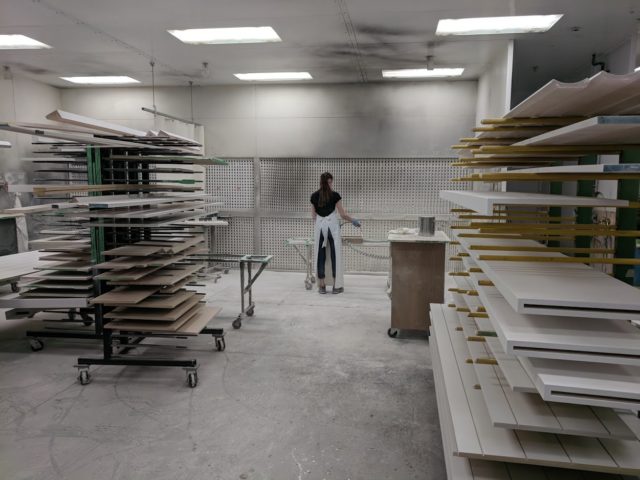-
Headquarters -
3541 Broadway Street, Hawkesville, Ontario, N0B 1X0
-
Year established -
1991
-
NAICS -
337127 - Institutional furniture manufacturing
-
Major expansions -
1994, 1998
-
Employees -
200
-
Exports -
US
-
Download -
Chervin Kitchen & Bath
Chervin Kitchen & Bath Inc. is a custom kitchen cabinet and wood furniture manufacturer. The firm is motivated by the Golden Rule: Do unto others as you would have them do unto you.
Organization
To be successful in today’s woodworking industry, companies must strike the proper balance between automation and hands-on labour. Chervin Kitchen & Bath Inc. (Chervin) strives to maintain this balance by using cutting-edge production technology while also continuing to rely heavily on skilled craftspeople in the manufacturing process. Located in Hawkesville, Ontario, Chervin takes this balanced approach to serve customers in the custom kitchen manufacturing and hotel furnishings markets. While most of Chervin’s work on custom kitchens is done in the Waterloo and Muskoka regions, it manufactures products for major hotels across North America.
With a team of over 200 employees, Chervin produces everything from custom cabinets and vanities to higher-volume hotel furniture. All elements of the production process, from initial design to assembly, are completed at its Hawkesville plant, with showrooms located in Waterloo and Port Carling. Business has grown so much in recent years that Chervin is opening another manufacturing space in St. Clements, Ontario, where production is expected to begin by the end of 2018 (double check).
History
Chervin’s story began when chief executive officer Kevin Bauman began building custom wood products out of his garage in New Hamburg for customers in the Waterloo region in 1991. Initial projects consisted of anything cabinetry-related, but over time, Bauman came to specialize in kitchen cabinets and furniture. Growth drove Bauman to relocate Chervin to Wellesley in 1994, and then to its current Hawkesville location in 1998.
The company also expanded by purchasing related companies in the industry. Today, it serves as the parent company to four subsidiaries: Artco By Chervin, Colonial Times By Chervin, Chervin Furniture & Design, and Vogel by Chervin. These acquisitions helped Chervin become a bigger player in the hospitality industry and increase its value offerings to include upholstery production and the retailing of premium furnishings.
Performance
Chervin recognizes that in order to serve its customers effectively it must move in the direction of Industry 4.0; to do this, it purchases machinery from Biesse, a prominent supplier of woodworking automation technology. Chervin’s latest addition is a state-of-the-art sanding machine which takes in a product, scans it to calibrate the optimal sanding process, then robotically sands it using the proper tools and techniques. Other machines include loading machines, automated sawing systems, drilling systems, and edgebanders.
A major focus of Chervin’s shift toward Industry 4.0 is getting to a point where all of its machines are connected wirelessly. The main benefit of this connectedness will be in production planning; when the machines are connected, workers will spend less time deciding which projects to work on because that process will happen automatically. The result will be more efficient production and workers who are better able to accommodate the many different materials required for manufacturing high-volume and customized wooden products.
Other benefits of adopting Industry 4.0 technologies are in product yield, automated product handling, and worker safety. The new technologies are more efficient and lead to fewer production errors, which minimizes material waste. Moreover, Chervin is in the process of implementing a new enterprise resource planning (ERP) system to work with the connected machines and further improve efficiency. Further automating the product-handling stage will also increase efficiency because at present, some parts of the process require workers to spend considerable time moving products from one area of the factory to another. Finally, Industry 4.0 technologies reduce workplace accidents as the machines are much safer. Fortunately, Chervin has not had a major factory accident for years, despite woodworking being an inherently dangerous industry.
While technological advancement is key to Chervin’s strategy, this does not mean its employees are any less important. In fact, management attributes the company’s ongoing success to the quality of Chervin’s employees. Making high-quality, custom wooden products still requires a great deal of human labour and expertise. Skilled craftspeople and machinists are required in virtually all areas of the production process.
Accordingly, Chervin partners with Conestoga College to promote and support the school’s woodworking program. By doing so, Chervin contributes to the excitement around woodworking and extends the knowledge pool of the region, and also gains some qualified employees from the process. New hires are taught the basics of everything they need to know in the first few weeks of working at Chervin, from production to installation and customer service. Continual learning is always on the forefront as new employees gain experience. As long as prospective employees have a basic education and are willing to learn and work hard, they are destined for success at this growing firm.
In addition to keeping employees up-to-date through in-house training and partnering with Conestoga College, Chervin aims to stay current with market trends by sending management to various international conferences and events. On the manufacturing side of the business, a team from Chervin recently attended the International Woodworking Fair® (IWF) in Atlanta, and visited Italy in 2017 to gain a better understanding of the new types of production equipment available. On the design side, Chervin regularly sends employees to the Kitchen & Bath Industry Show (KBIS) and keeps in contact with designers in the area to stay on top of design-related developments.
Challenges
Currently, Chervin’s biggest challenge is the need for more manufacturing space; however, this will be resolved once the move to its new St. Clements building is complete. Another ongoing challenge is the adaption to Industry 4.0 technologies and processes. Every day, Chervin further refines and improves the utilization of new machinery so that its employees are able to operate these machines at maximum efficiency. There are certainly growing pains, but management is confident that once the dust settles, the benefits will be exponential.
Finally, Chervin expresses the same desire held by many manufacturing companies for more students to pursue careers in skilled trades and other hands-on industries. It is always a challenge for the company to attract the kind of hard-working talent that it requires to succeed, so Chervin encourages more individuals to consider gaining experience in this area.
Prospects
It is important to note that Chervin’s main goal is not to grow its revenue dramatically or to become the largest company in its industry. Instead, its focus is on satisfying its customers and building a workplace where employees can succeed. Its goal is to provide the best quality product and service to all its customers. Chervin’s Mission Statement and Core Values are continually carried out through each process and through each employee. Management realizes that the best customer and employee experience will come from adopting Industry 4.0 technologies, which will in turn translate into continued business success. Thus, a short-term priority for Chervin is to smoothly transition into its new St. Clement’s plant and set up the facility in a way that allows it to best leverage these technologies and processes.
Chervin has useful advice for other companies looking to follow a similar path. Kitchen production manager, Jason Bauman, notes the necessity to get past the initial fears of a significant cost up front. While moving toward Industry 4.0 will require some capital investment and not all stakeholders may be initially on board, once the decision has been made to move forward, the benefits seem endless.
For more information about Chervin Kitchen & Bath, visit their website.
Published: August 22, 2018

Laurysen Kitchens
Laurysen Kitchens Ltd. is a kitchen, bathroom, cabinet, and vanity manufacturer located in the Ottawa region of Ontario. It houses a 55,000 square foot facility with state-of-the-art technology to service customers in Canada and the United States. Since its inception it has been family-owned and -operated, and the business is currently run by the second and third generations of the Laurysen family. Its major customers include all of the biggest home builders in Ottawa, local retail consumers, renovators, and customers across Ontario who purchase its products through its extensive dealership network.
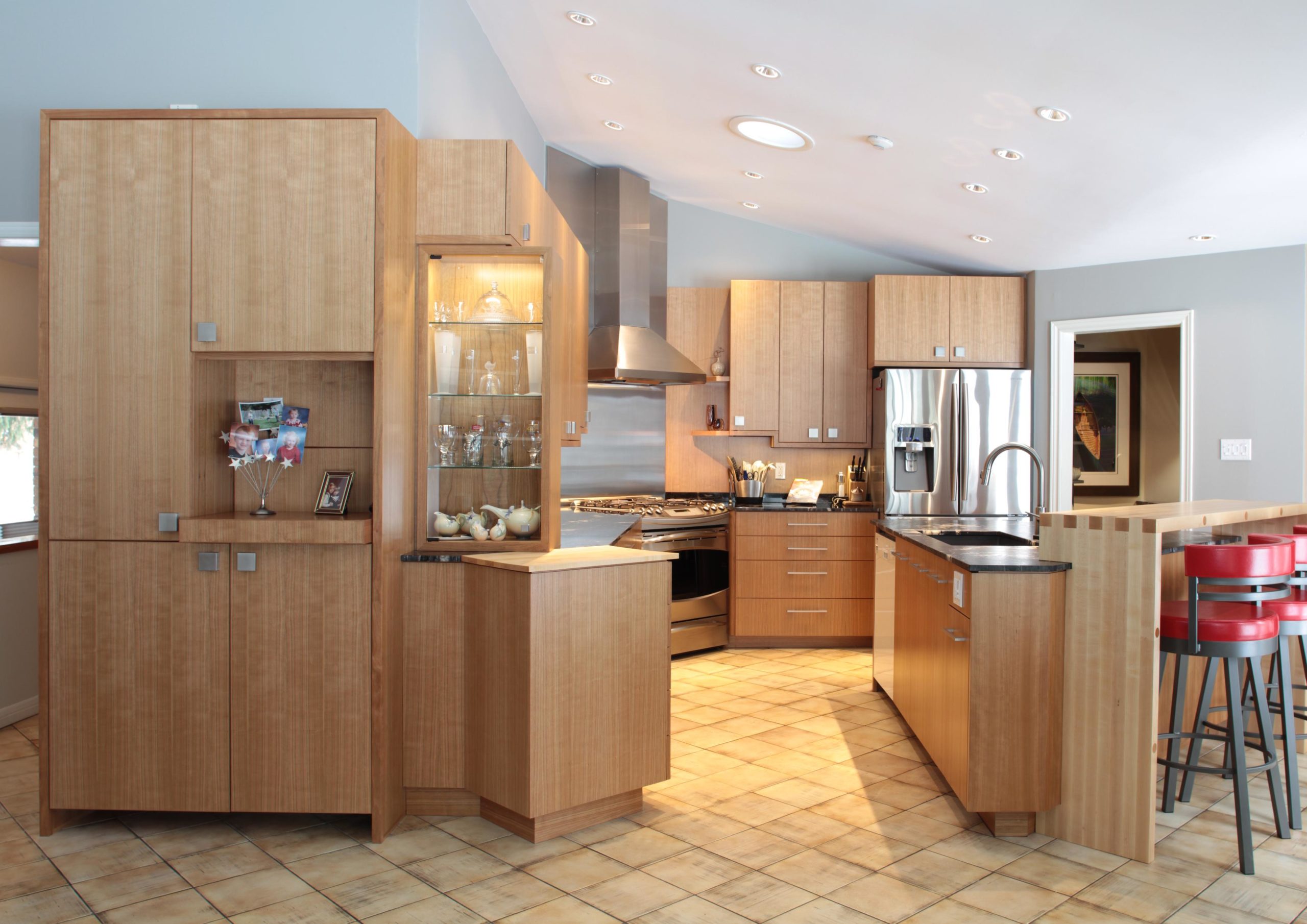
Cardinal Fine Cabinetry
Cardinal Fine Cabinetry has a long and successful history as one of London’s top design firms manufacturing kitchens, vanities and residential millwork.

Cabinetree
Cabinetree designs and produces custom cabinetry for commercial and residential purposes. Offering an extensive selection of materials, styles, and accessories, Cabinetree has a reputation for high-quality customization.
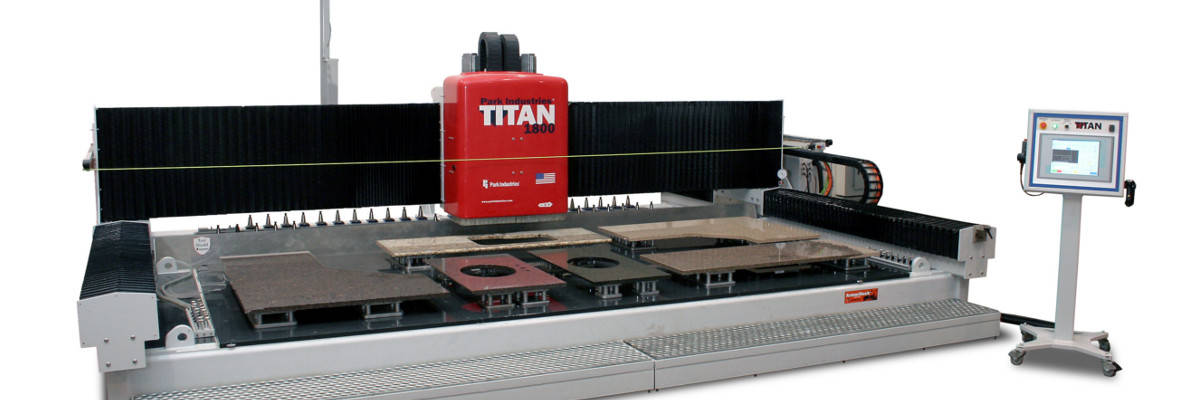
KW Countertop
Postform is the manufacturing arm of KW Countertop, producing high quality and environmentally friendly countertops from various materials.

Pan-Oston Limited
Pan-Oston is a leading manufacturer of metal retail fixtures, best known for producing checkout lanes. The firm is a founding member of a cooperative organization, Complete Retail Solutions (CRS), which joins together best-in-breed manufacturers of complementary retail fixtures to create a stronger presence in the industry than any one member would have individually. Halfway through a five-year strategic plan, Pan-Oston is revamping to remain ahead of the curve of an evolving retail environment with implications in market conditions, consumer preferences, and e-commerce.
